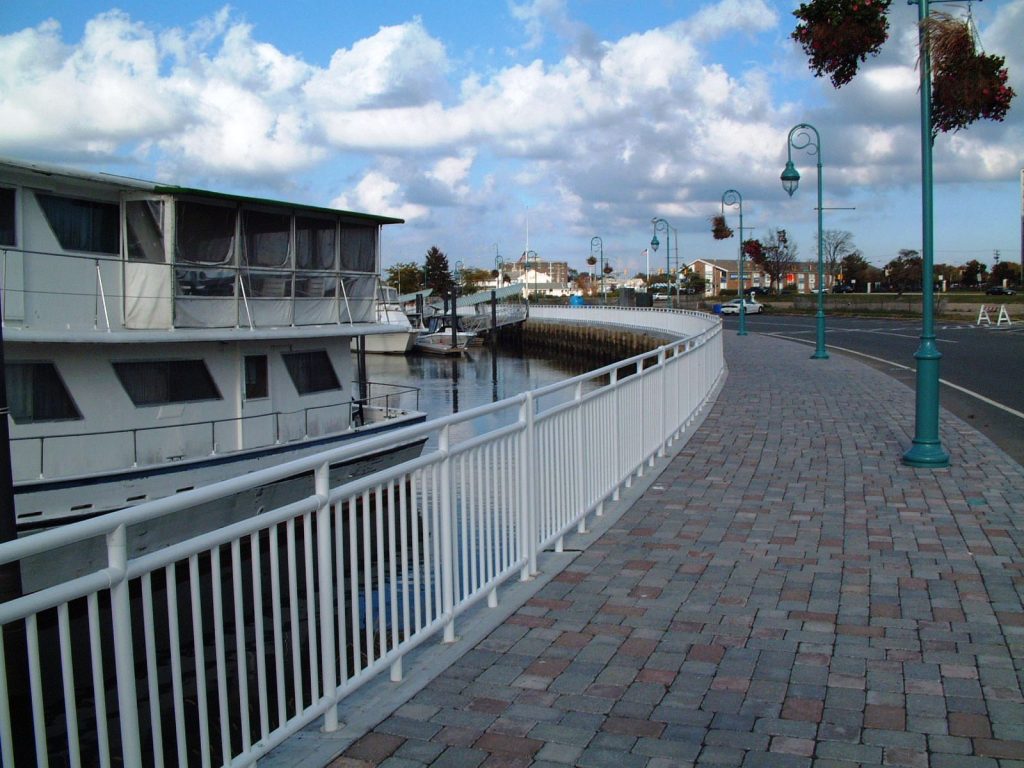Why Consider Avcon Structural Thermoplastic Railing Systems?
For years one of the most problematic items of building maintenance has been the railing system used to protect its occupants. The condition of the railing is a major factor in the building’s appearance and in potential liability. We have grown to accept the “fact” that railing must be constantly maintained and that corrosion was an ever present enemy. Therefore we searched for materials and systems that would postpone the inevitable replacement.
Whether we are seeking which railing material to use in the design of a new building or replacing an existing system, several factors warrant consideration. First, and most basic, a strong system that meets national building codes is essential. Color and style are important items. Next, we have to decide if cost is the major factor. While we all want the best value, if maintenance costs are to be often and excessive and if replacement is to be relatively soon, then what appears to be the cheapest rail, simply is not. If the system we select meets structural codes when new, will it maintain that strength over time?
The evolution of railing materials has been extensive and diverse. Consider the possibilities; wood, masonry, iron, steel, and aluminum. While all have their benefits, each lack two important factors. All, including aluminum, require extensive maintenance, and when exposed to the elements (i.e., salt), deteriorate rapidly. Efforts have been extensive to create different finishes, protective “sealants,” paints, coatings, etc., all in an effort to reduce maintenance and ward off the inevitable replacement.
Many have chosen to “live with” things the way they were; they saw no alternatives. Yet remember, we live in the 20th century. We have learned that technology, when properly applied, can be a beautiful thing. Enter the item that has profoundly affected our lives more than any other material: plastics. Yes, plastics. Plastics have transformed our very existence. Try to imagine anything in any industry that has not applied plastic technology. Walk through your home and try to identify anything that has not been affected.
Who of us, though, cannot remember the time when an item made of plastic was not thought of as cheap, and if it was from Japan, it was cheap. Now, however, some of the most expensive products you can buy are made of plastics from Japan. But what about strength, you may ask, and can I maintain an “upscale appearance” using plastic railing. Why, when the potential for liability is so excessive, would I ever choose plastic? It’s because after a thorough investigation of thermoplastic technology, coupled with the most valuable test of all, “real and everyday use,” the superior performance of structural thermoplastic railing has been proven. The educated design professional, after learning what can be done with today’s technologically advanced structural plastic, will only specify engineered thermoplastic. They are calling on the manufacturer for maintenance-free products. The trend will continue.
Now, let’s discuss strength. The liability associated with any railing can be greatly reduced by specifying and using a rail system that exceeds building codes, and, more importantly, maintains that strength over time. The natural corrosion and oxidation that occurs when screws and dissimilar metals and materials, including concrete, are combined in the presence of salt and other chemicals will render many systems dangerous. A railing that may have met code when installed, may not in a short period of time. Without any compromise in safety, structural thermoplastic when properly fabricated can complement the aesthetic appeal of your design, eliminate maintenance, and keep the exceptional strength it is designed with.
Not all plastics are created equal. There are thousands of plastic recipes, known in the industry as compounds. The right plastic for the right job is an industry in itself. Do not confuse your knowledge of plumbing pipe and plastic patio furniture, glued together, with the modern world of thermoplastic. After all you cannot use plastic sandwich wrap to side a house and you cannot use PVC plumbing pipe and fittings to build a strong railing system. The idea to use plumbing pipe with fittings (i.e., crosses, tees, elbows, etc.) is great if you want to run water through it, but it was never designed to be structural. Enter into the equation a new family of plastics. You think nothing of all these late model cars, with body side moldings and rocker panels in just about any color, and even high impact bumpers on the most expensive of cars. Special thermoplastics, designed with scientific polymers, compounds, and plastic alloys can provide materials that are non-corrosive, durable, attractive, and maintenance free. Design professionals are learning fast that there is little need to specify metals when thermoplastics can meet all their design criteria and in addition, offer major advantages in maintenance and replacement costs. Unlike some mechanical systems, thermoplastic railing can be shaped in the smoothest of radii or sharpest of bends. If you doubt the strength, durability, and cosmetics of seamless structural thermoplastic railing systems, take a trip to Walt Disney World, Six Flags, Universal, Holiday Inns, Sheraton, and many condominium projects just to name a few, and you will see major examples of structural “Plastic” railing at work in the most demanding of situations. So when you are considering what type of railing to use when building, designing, or replacing your railing, do not forget that you have another intelligent alternative…structural thermoplastic from AVCON.
Magazine Article Reprint


